Overview
The article sheds light on the insights surrounding the GERD disability rating for veterans. We understand that navigating the VA's assessment process can be overwhelming. It’s essential to grasp how these claims are evaluated and the support available to veterans during this journey.
Thorough documentation and a clear understanding of the updated rating criteria are crucial. These elements can significantly influence veterans' claims and their access to benefits. Organizations like Turnout play a vital role in streamlining the application process, ensuring that veterans receive the assistance they need.
You are not alone in this journey. We’re here to help you every step of the way.
Introduction
Navigating the complexities of the GERD disability rating for veterans can feel overwhelming. We understand that the VA's ongoing refinement of its criteria and processes adds to this challenge. However, with recent advancements in technology and support systems, veterans now have unprecedented opportunities to streamline their claims and enhance their chances of receiving the benefits they deserve.
It's common to wonder how to effectively leverage these changes to ensure that your unique health challenges are recognized and adequately addressed. This article delves into key insights and strategies designed to empower you in navigating the GERD disability rating process with confidence and clarity. Remember, you are not alone in this journey—we're here to help.
Turnout: Streamlining GERD Disability Claims for Veterans
is transforming how former service members manage their requests for the . By utilizing and the skills of trained nonlegal supporters, Turnout . This ensures that former service members obtain essential assistance without the burdensome red tape usually linked with conventional organizations. This innovative method improves efficiency, with the VA handling requests at a rate 17.8% quicker than the prior fiscal year. This enables veterans to take charge of their requests, making the process more transparent and manageable.
Veterans have expressed appreciation for this streamlined process. They note that it alleviates the stress often linked to navigating the . Many individuals have recounted feelings of being inundated by documentation and obligations, only to discover that Turnout's AI-powered assistance simplifies the comprehension and handling of their requests.
As of mid-August 2025, the VA . This reflects a . With the updated gerd disability rating va criteria for gastroesophageal reflux disease effective from May 19, 2024, service members must submit thorough medical documentation to qualify for elevated ratings. Turnout's AI technology not only helps in collecting these documents but also guarantees that service members are updated at every stage. Ultimately, this results in and shorter waiting periods. Additionally, for those seeking , Turnout collaborates with IRS-licensed enrolled agents to provide comprehensive support.
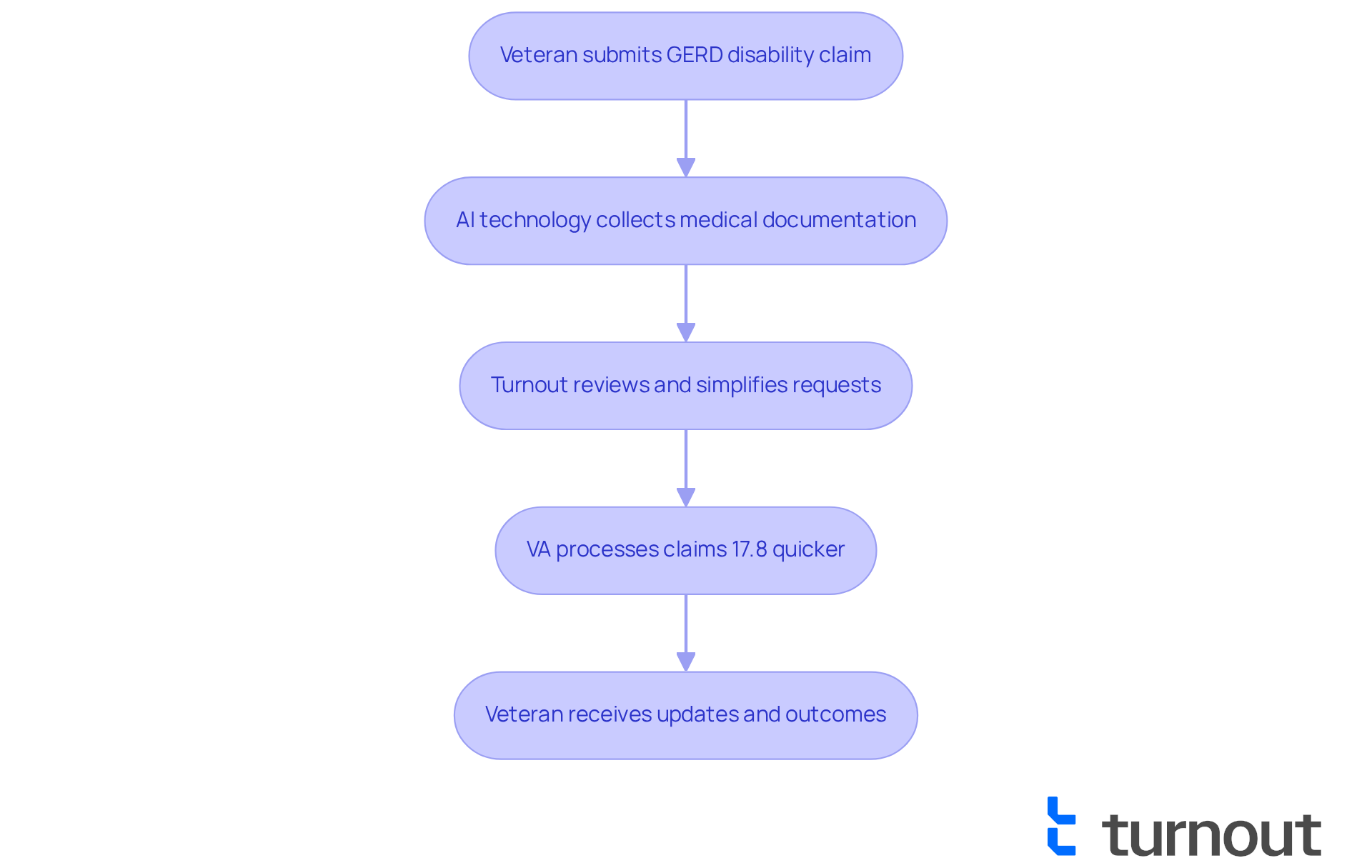
GERD Rating Criteria: Key Factors Affecting VA Disability Ratings
We understand that navigating the complexities of the for gastroesophageal reflux disease (GERD) can be challenging. The VA assesses the gerd disability rating va based on several , including symptom intensity, frequency of episodes, and the overall effect on daily activities. Ratings can range from 0% to 80%, reflecting how GERD impacts your quality of life.
Key criteria for assessment include:
- The presence of dysphagia (difficulty swallowing)
- The necessity for ongoing medical treatment
For example, a 10% rating is assigned for a documented history of esophageal strictures requiring daily medications. In contrast, a 50% rating necessitates recurrent that require dilatation three or more times per year.
Comprehending these criteria is crucial for former service members like yourself to effectively present your case for the gerd disability rating va and . Recent revisions to the rating schedule, effective May 19, 2024, have introduced particular requirements concerning esophageal stricture. This change makes it vital for veterans to submit thorough medical documentation to support their applications.
Veterans who have successfully navigated the claims process often emphasize the significance of connecting acid reflux to service-related ailments. These elements can greatly improve your likelihood of obtaining a positive rating. Remember, you are not alone in this journey; we’re here to help you every step of the way.
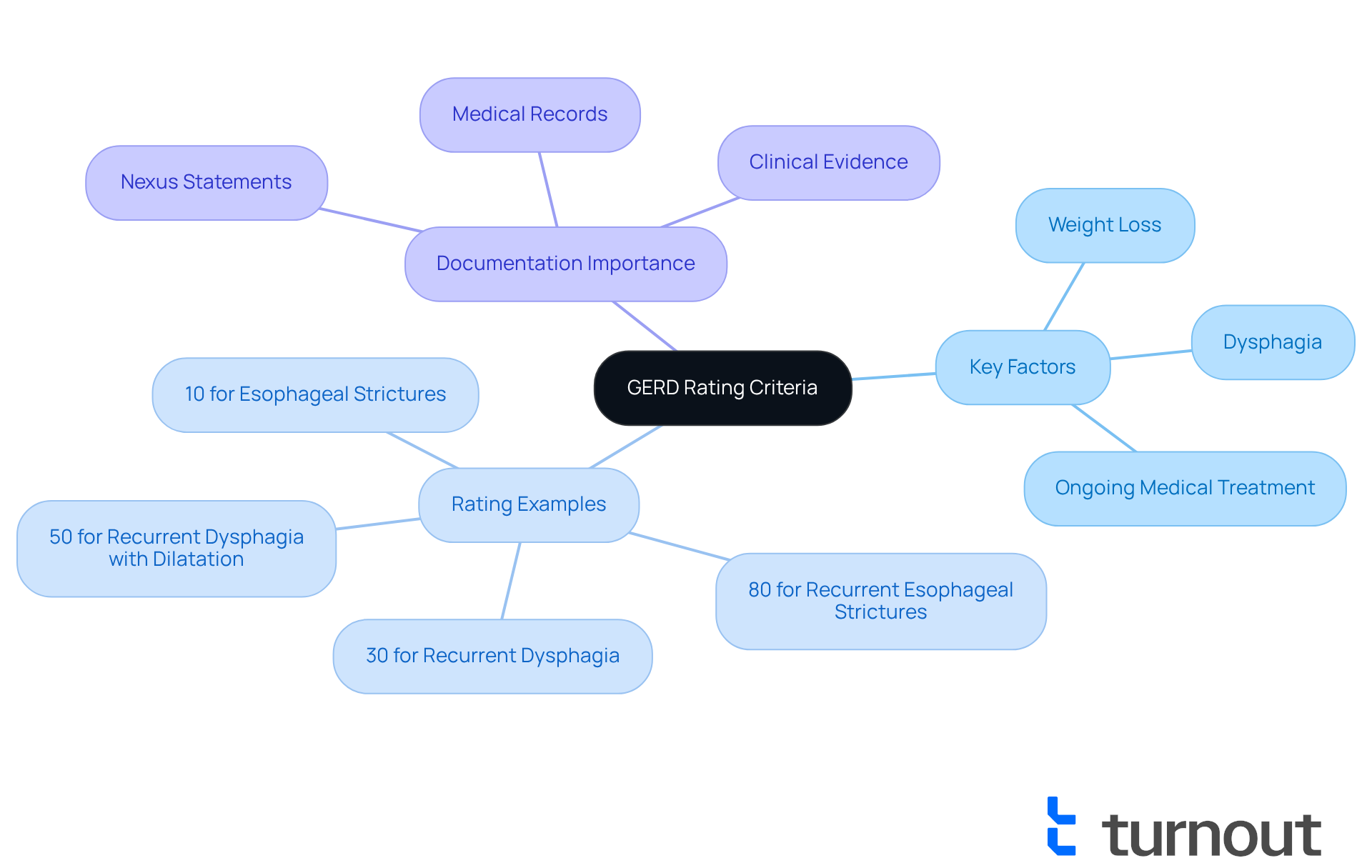
2024 VA Rating Changes: What Veterans Need to Know About GERD
As of May 2024, the VA has introduced new rating criteria for the , specifically establishing Diagnostic Code 7206 for this condition. We understand that these changes can feel overwhelming. It's important to recognize how are now emphasized in these new guidelines.
Veterans should be aware that these updated criteria may present opportunities for , specifically regarding their [GERD disability rating VA](https://disabilitydenials.com/blog/gerd-va-rating-changes-2024), depending on the severity of their situation. This is a chance to ensure that your experiences are fully acknowledged. Understanding how these updates might influence your claims in the future is essential.
Remember, you are not alone in this journey. We're here to help you . Take the time to familiarize yourself with these new criteria, as it could significantly .
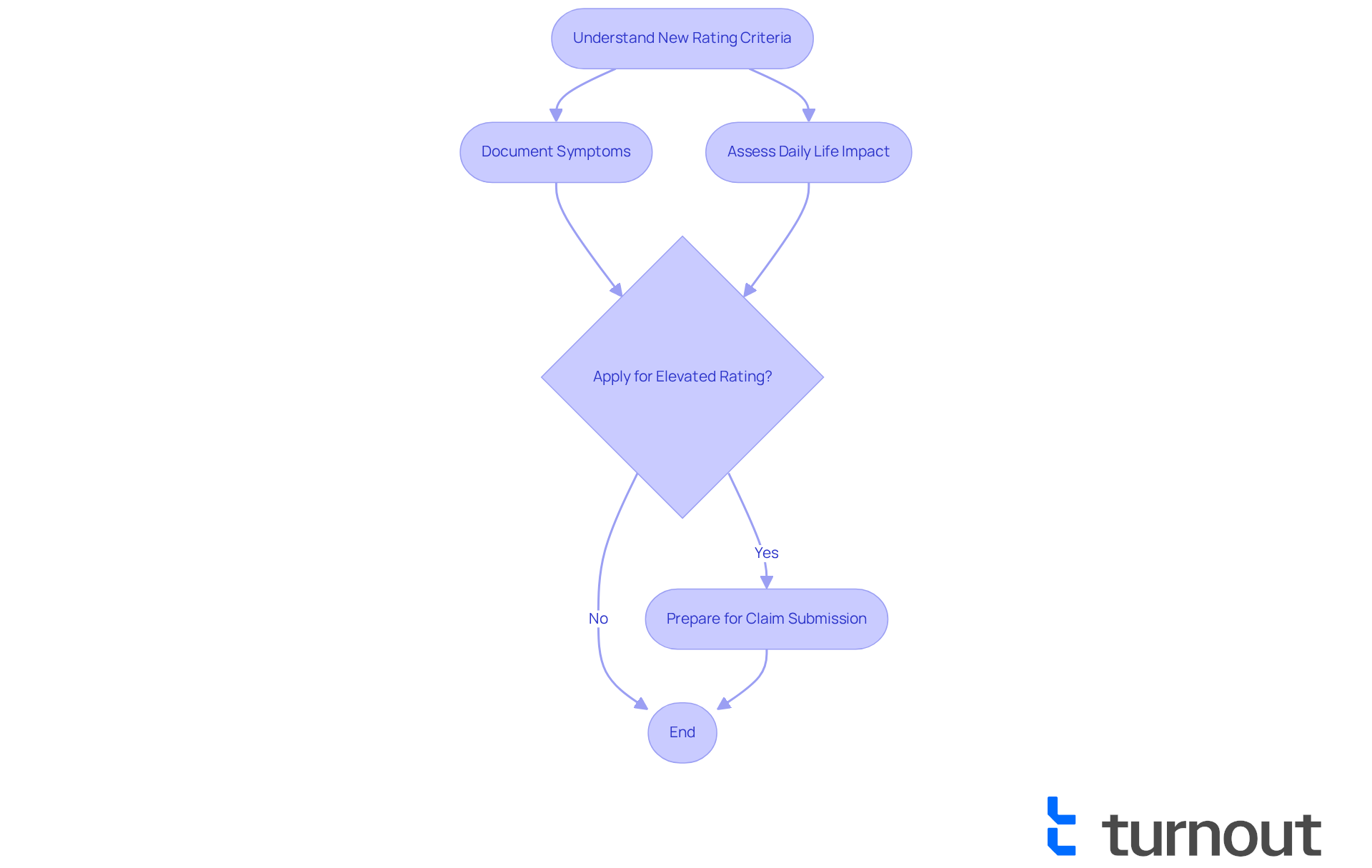
Primary vs. Secondary Conditions: Understanding GERD's Impact on VA Ratings
Gastroesophageal Reflux Disease (GERD) can be categorized as either a primary or secondary ailment in the context of a . A primary requirement is directly linked to military service, while a secondary issue arises due to another service-related disability. For instance, we understand that individuals with as a secondary concern stemming from stress-related factors. This can lead to increased stomach acid production, worsening symptoms.
It's important to note that a 2020 study found that approximately 48% of individuals with gastroesophageal reflux symptoms experience swallowing difficulties. This statistic highlights the significant impact of this condition on former service members, particularly those dealing with mental health challenges. Comprehending this distinction is essential for former service members to effectively and secure the appropriate [GERD disability rating VA](https://disabilitydenials.com/blog/gerd-va-rating-changes-2024).
Evidence supporting the connection between PTSD and acid reflux can strengthen your claims. Therefore, it's crucial for former service members to meticulously document their . As Brian Reese, a VA disability specialist, emphasizes, 'By accurately recording these links, former service members can , which is relevant to their GERD disability rating VA as a secondary issue.'
Furthermore, we want to ensure that former service members are aware of the GERD disability rating VA and the , effective May 19, 2024. This change may influence how your claims are evaluated. By recognizing gastroesophageal reflux disease as a potential secondary issue, you can advocate for the benefits you deserve. Remember, you are not alone in this journey, and we're here to help.
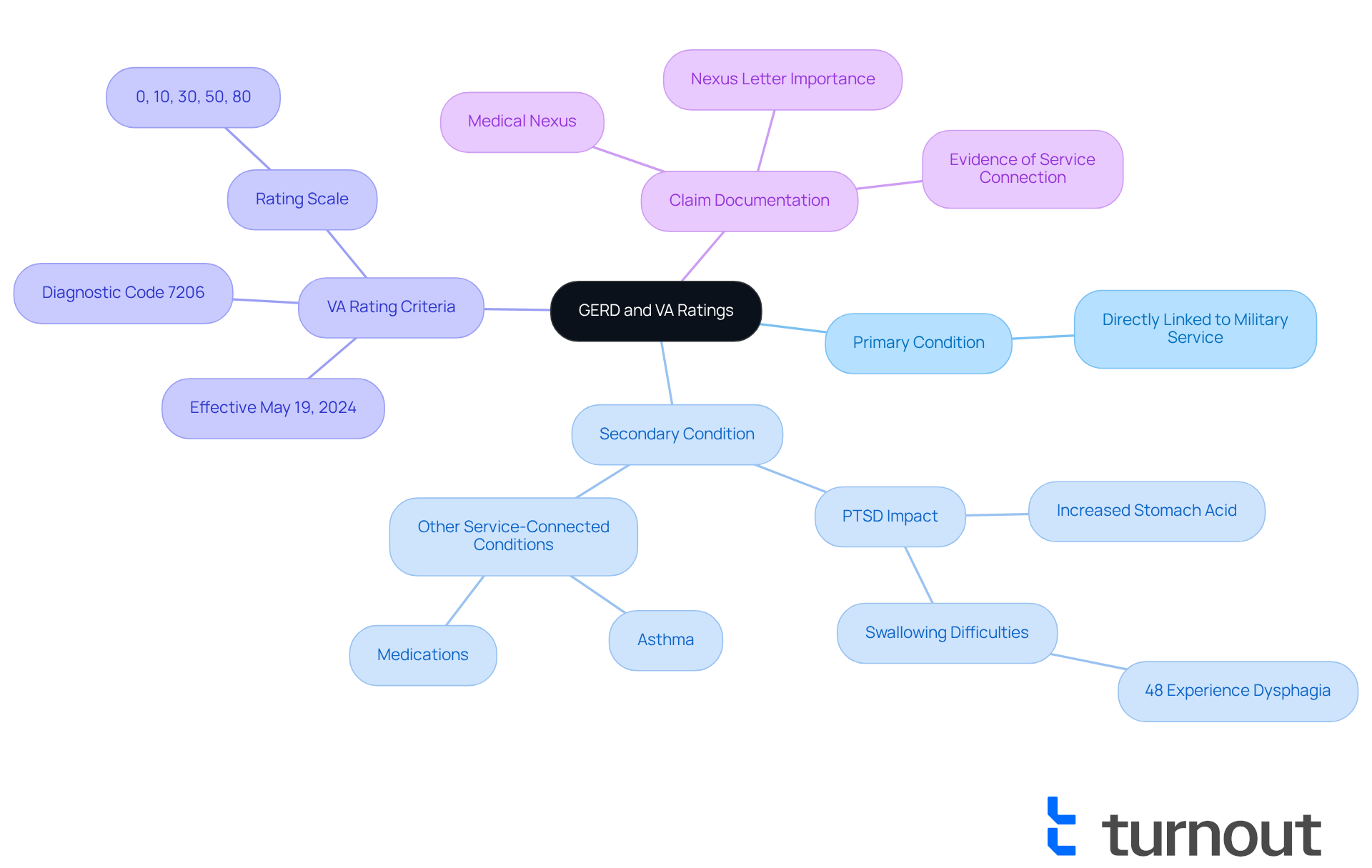
Appealing GERD Disability Ratings: Steps for Veterans to Take
If you are a veteran feeling that your is insufficient, know that you have the right to challenge this decision. We understand that navigating this process can be overwhelming. The typically involves three main steps:
- Filing a
- Submitting a
- Appealing directly to the
It's important to gather all to . You are not alone in this journey; consider reaching out to that can provide assistance and strengthen your appeal. Remember, taking these steps can make a significant difference in your pursuit of the support you deserve.
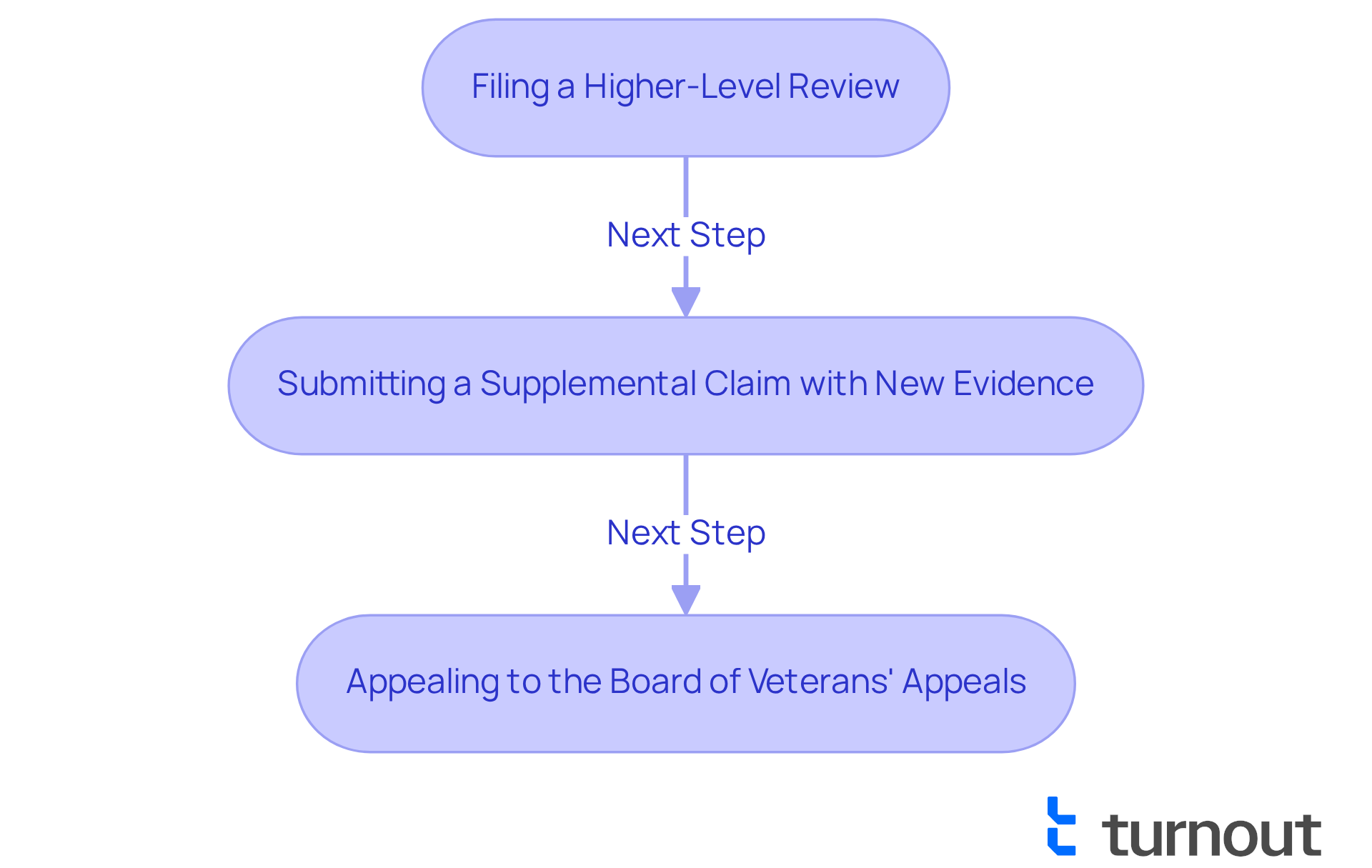
Common GERD Symptoms: Recognizing the Condition for VA Claims
Gastroesophageal reflux disease (GERD) can bring about common symptoms such as:
- Heartburn
- Regurgitation
- Chest pain
- Difficulty swallowing
We understand that recognizing these symptoms is crucial, especially for [veterans who need to document them for their applications](https://myturnout.com/why-turnout). It's important to note that , nausea, and dental erosion can also play a significant role in illustrating how acid reflux impacts a service member's health and daily life.
As of May 19, 2024, statistics reveal that the VA has risen to 80%. This highlights the importance of thorough documentation throughout the application process. Healthcare professionals stress that early recognition of these symptoms can lead to better outcomes. One expert wisely stated, " in ."
Additionally, former service members should be aware of the updated rating schedule under Diagnostic Code 7206, which directly influences their requests. To support their claims, it's essential for veterans to keep a and treatment history for the [GERD disability rating VA](https://vet.law/disability-claims/physical-conditions/gastroesophageal-reflux-disease). This extensive documentation can significantly improve their chances of obtaining the benefits they deserve.
It's also worth mentioning that GERD may be linked to other challenges, such as PTSD and anxiety, which can further affect a person's overall well-being and appeals. Remember, you are not alone in this journey, and we are here to help you .
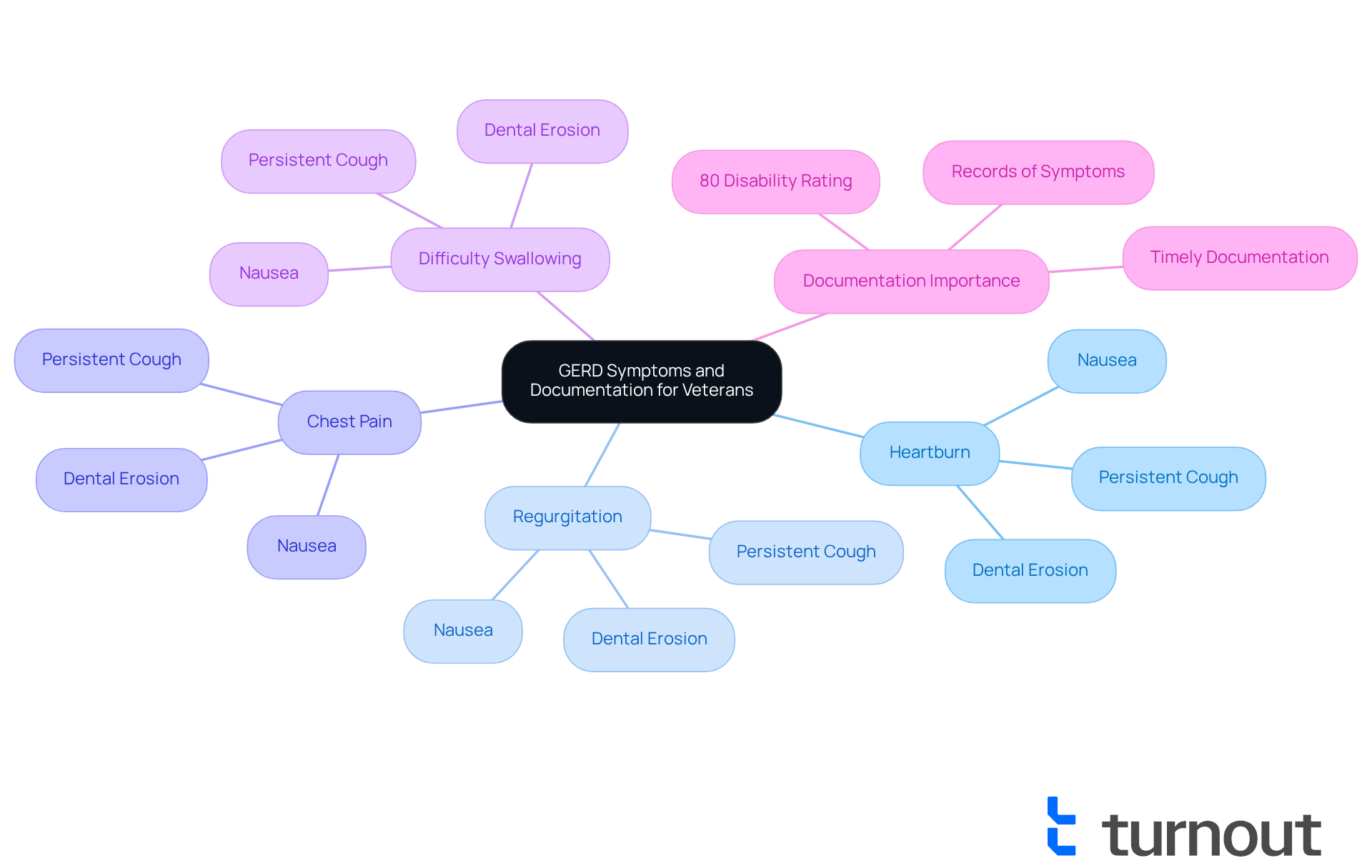
Documenting GERD for VA Claims: Essential Evidence to Gather
To effectively support a GERD request, it's important for individuals who have served to compile thorough medical records. This includes diagnosis reports, treatment histories, and relevant test results such as endoscopies or imaging studies. A finalized (DBQ) from a healthcare provider can significantly enhance a request by providing comprehensive information about the individual's condition and its impact on daily life.
Many veterans have shared their experiences regarding the . One veteran remarked, 'Having my medical history recorded made a considerable impact on my application process.' This sentiment resonates with many who have diligently gathered evidence for their GERD cases. Thorough documentation is essential for achieving a .
As Anthony Wright highlighted, the claims process is ongoing. Keeping current medical records is crucial for former military personnel seeking reevaluation. It's common to feel overwhelmed, but statistics show that those who carefully collect their have a greater success rate in securing the benefits they deserve. For instance, the for 55 medical issues related to digestive system disabilities, reflecting an increasing acknowledgment of the need for precise assessments based on documented impairments.
In summary, the significance of cannot be overstated. They serve as the foundation of a successful application, ensuring that veterans obtain the compensation they rightfully deserve. Remember, you are not alone in this journey; we’re here to help you every step of the way.
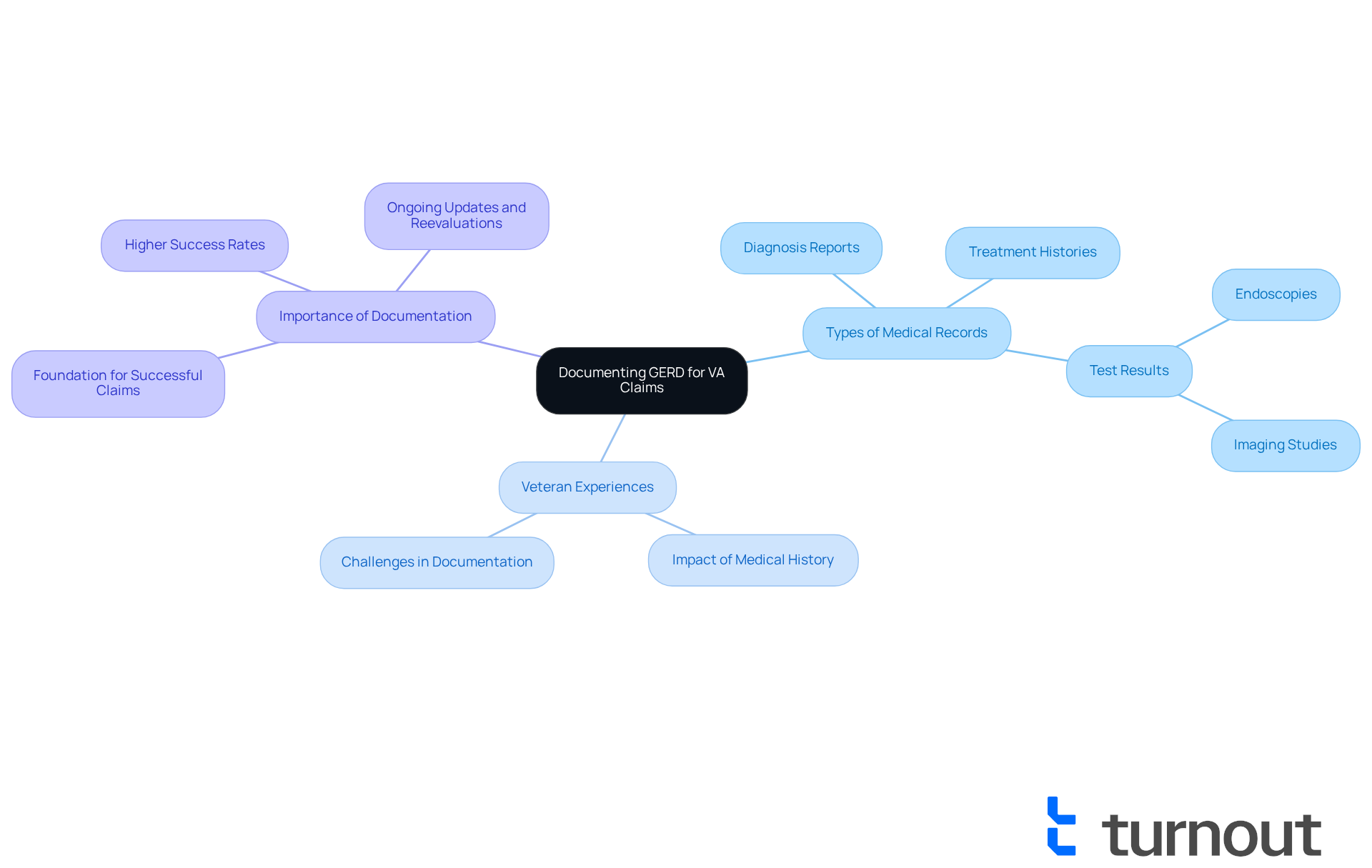
Service Connection: How GERD Relates to Other Conditions
Gastroesophageal reflux disease (GERD) is often linked with other , such as PTSD, anxiety, and chronic pain. We understand that can be challenging. Veterans should explore these links when presenting their requests, as demonstrating a relationship between acid reflux and another service-related issue can significantly enhance their likelihood of obtaining benefits. This process may require obtaining medical opinions that substantiate the claim of aggravation or causation between the conditions.
Research suggests that individuals with PTSD or anxiety disorders frequently face increased rates of GERD. Studies show that the occurrence of this condition among individuals with PTSD is significantly greater than in the broader population. For instance, the VA acknowledges that former service members may qualify for a and , highlighting the interconnectedness of these health issues.
To establish a connection, former service members should:
- Collect comprehensive medical records and expert opinions that explain how their GERD symptoms are worsened by or directly linked to their PTSD or anxiety.
- .
- Seek assistance from healthcare professionals who can provide insights into the relationship between these conditions.
This evidence is essential in backing requests for the [GERD disability rating](https://publichealth.va.gov/exposures/radiation/diseases.asp) benefits. By doing so, they can and improve their chances of receiving the benefits they deserve. Remember, you are not alone in this journey, and we’re here to help you every step of the way.
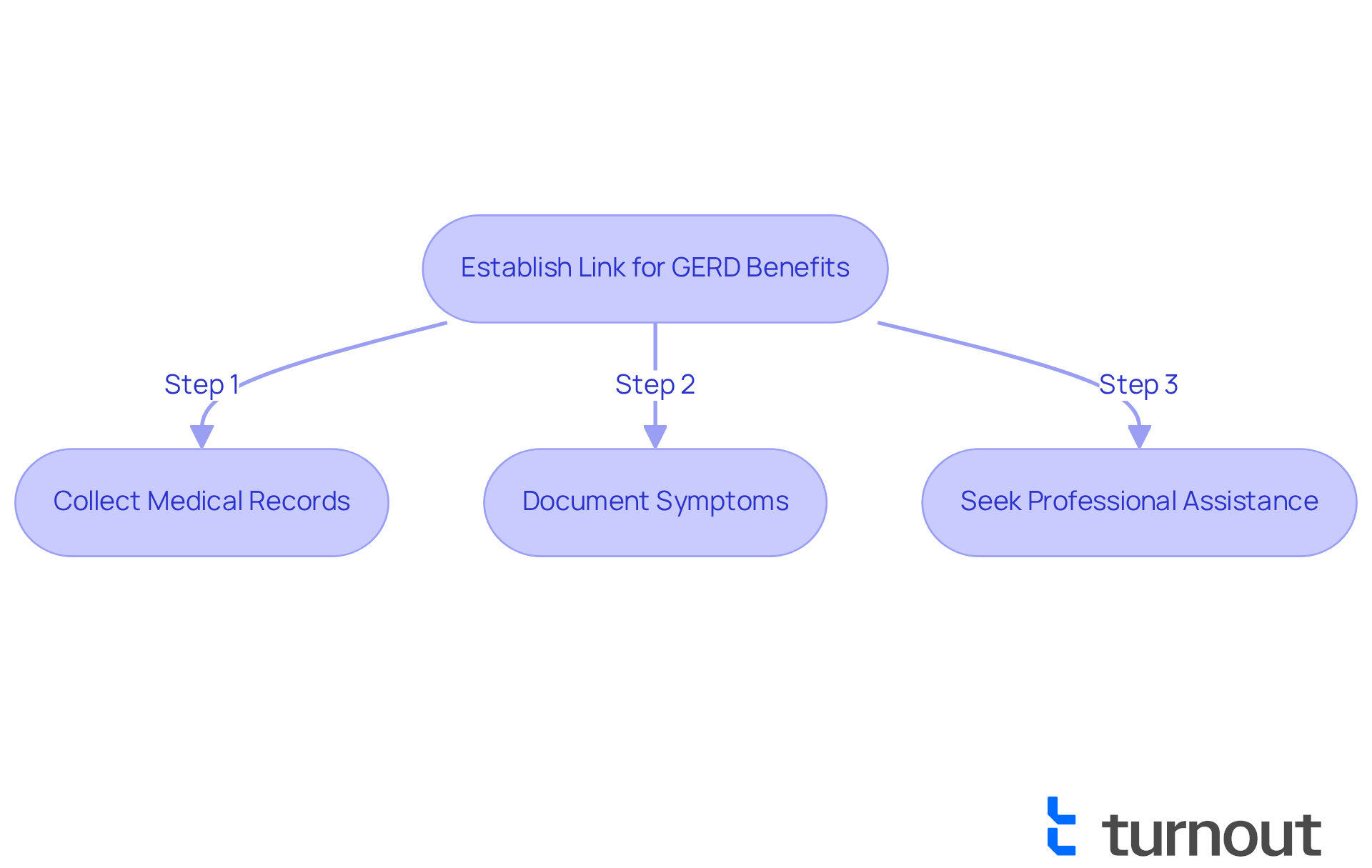
TDIU and GERD: Maximizing Disability Benefits for Veterans
Veterans experiencing gastrointestinal reflux disease may often face significant , which can be evaluated through a . If this condition hinders your employment, you may be eligible for a Gerd disability rating VA, which could qualify you for . This benefit allows you to receive compensation at the 100% disability rate, even if your gastrointestinal reflux disease rating alone does not reach that level. To qualify for TDIU, it’s important to provide proof that your acid reflux, along with other service-related disabilities, prevents you from obtaining and sustaining .
The symptoms of , such as intense heartburn, discomfort, and trouble swallowing, can greatly affect your focus and work performance. It’s common to feel overwhelmed when tasks require prolonged concentration or physical activity. This can lead to missed workdays or reduced efficiency. For those in roles that involve regular interaction with the public or driving, sudden symptoms can create significant challenges.
Statistics show that a notable percentage of veterans with gastroesophageal reflux disease receive due to their gerd disability rating va, highlighting the profound impact this condition can have on daily life and work capabilities. Keeping thorough documentation of how your influence your work and daily routines is essential for strengthening your TDIU request. We encourage you to record your experiences, as this information can support your claims and illustrate the extent to which this condition affects your ability to work.
Moreover, understanding the is vital. The gerd disability rating VA can range from 0% to 80%, depending on the severity of symptoms. If your combined rating does not meet the standard thresholds for TDIU, you may still qualify for extraschedular TDIU if your symptoms hinder your ability to work. Discussing your situation with an experienced service representative can provide valuable insights into navigating the TDIU application process effectively. Remember, you're not alone in this journey; we're here to help you every step of the way.
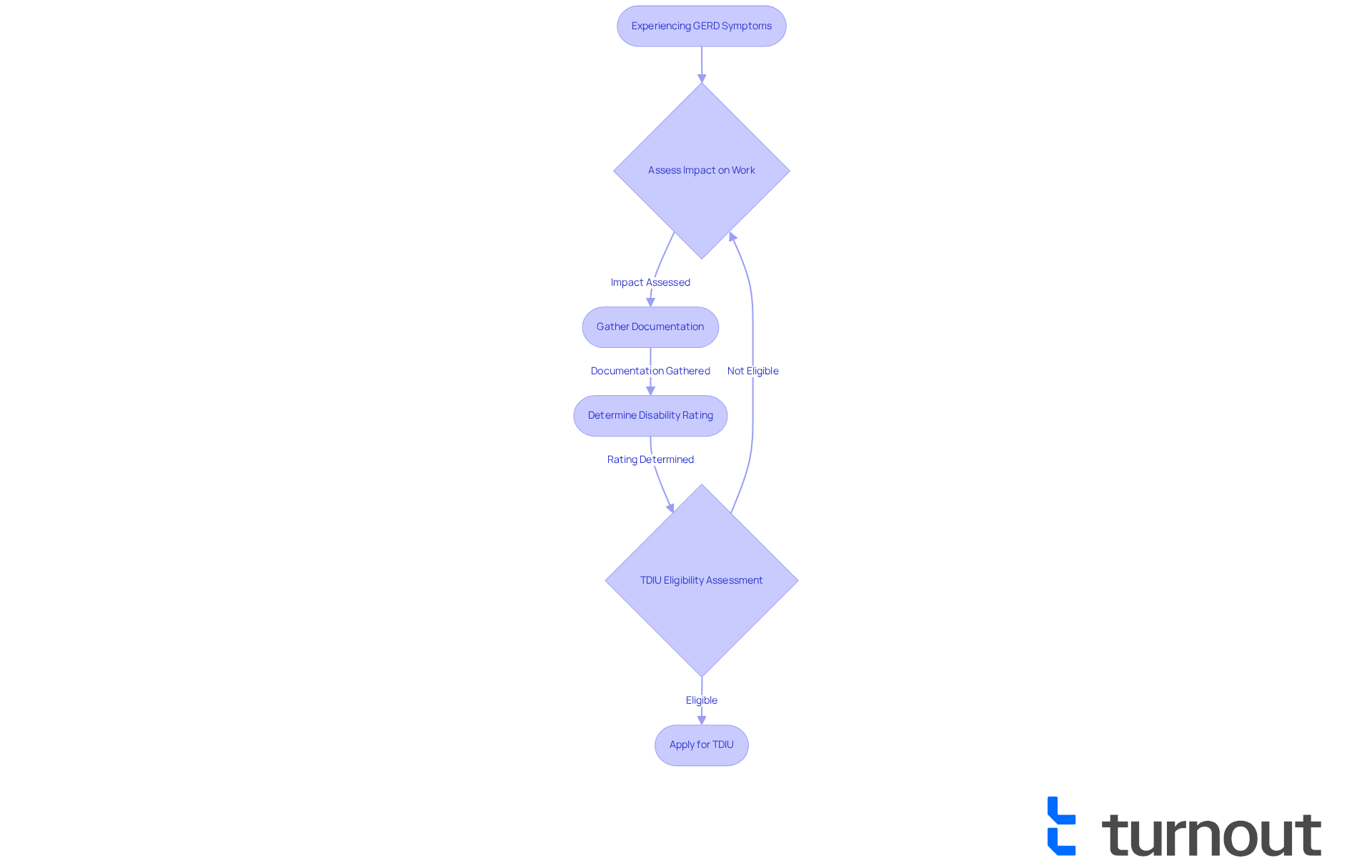
Resources for Veterans: Support Options for Managing GERD
often face many challenges, but there are numerous resources available to support their health and . The VA offers healthcare services that include specialized care for acid reflux, ensuring that former military personnel receive the they need. We understand that navigating the application process can be complex, and in assisting former service members. They provide knowledge and support tailored to individual requirements.
For instance, organizations like VA Claims Insider help veterans manage their claims. They assist in and connecting the dots between acid reflux and . It's common to feel overwhelmed, but statistics show that a significant percentage of former military personnel utilize to obtain their , highlighting the importance of these resources in managing their health.
Moreover, among individuals facing similar challenges, nurturing shared experiences. By leveraging these resources, veterans can effectively manage their condition and advocate for their rights. Remember, you are not alone in this journey; we’re here to help you receive the benefits you deserve.
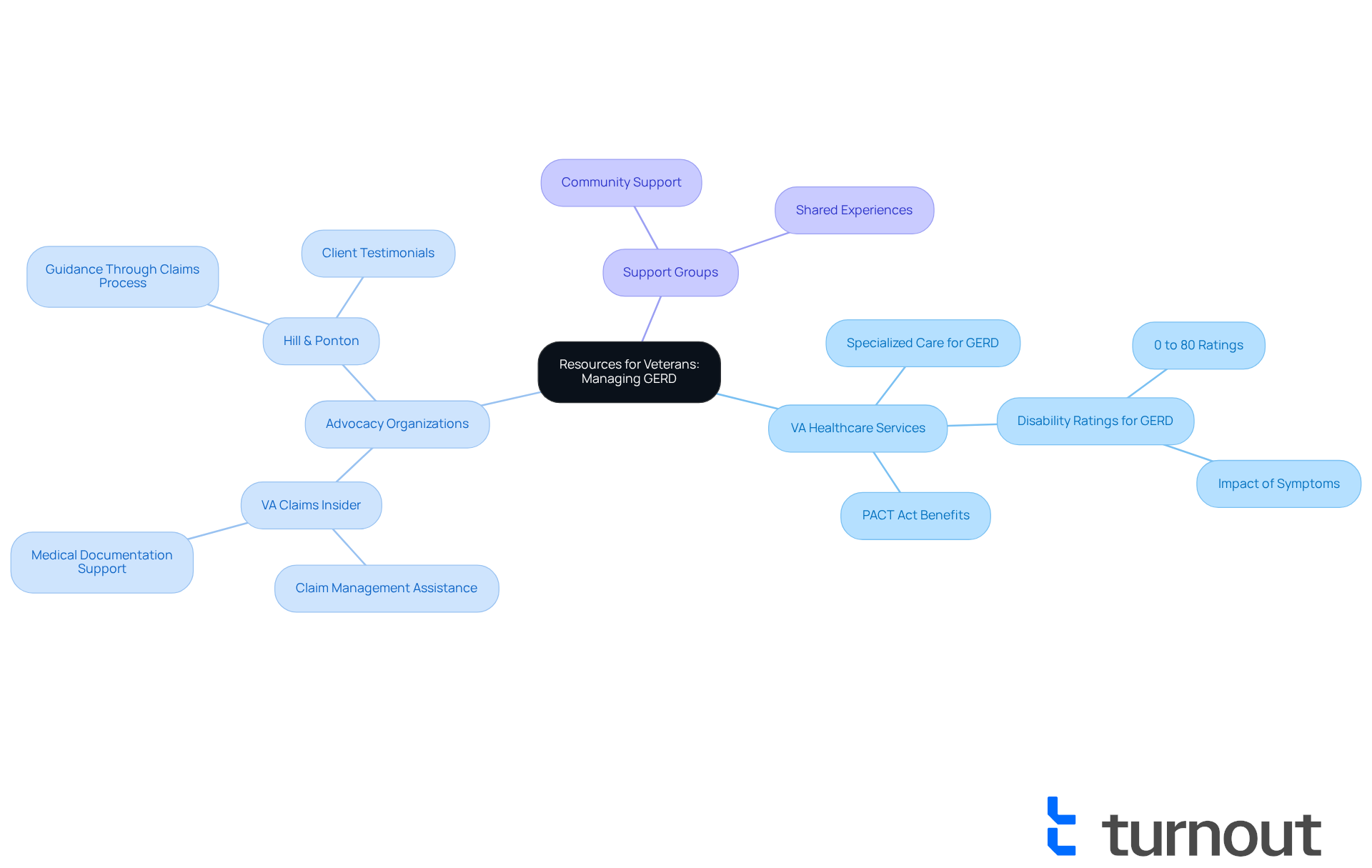
Conclusion
Navigating the complexities of GERD disability ratings within the VA system can feel overwhelming for veterans. We understand that this journey may seem daunting, but services like Turnout are here to help. By leveraging technology, they streamline the claims process, making it more accessible and less stressful for former service members. As you familiarize yourself with the recent changes in rating criteria and the importance of comprehensive documentation, you can better advocate for your needs and secure the ratings you deserve.
Key insights include:
- The necessity of thorough medical records
- The distinction between primary and secondary conditions
- The steps involved in appealing insufficient ratings
It’s common to feel unsure about these aspects, but recognizing the common symptoms of GERD and their connection to other service-related conditions can significantly enhance your claim. Gathering essential evidence and understanding how GERD impacts your daily life and work capabilities is critical for maximizing benefits.
Remember, you don’t have to face the VA claims process alone. We encourage you to utilize available resources, seek support from advocacy groups, and remain proactive in documenting your experiences. By doing so, you can improve your chances of receiving the benefits you deserve and foster a sense of community and shared understanding among those facing similar challenges.
Frequently Asked Questions
What is Turnout and how does it help veterans with GERD disability claims?
Turnout is an organization that streamlines the process for former service members managing their requests for GERD disability ratings. By utilizing AI technology and trained nonlegal supporters, Turnout simplifies the application process, reducing red tape and improving efficiency.
How has the processing speed for VA disability claims changed with Turnout?
With the implementation of Turnout's services, the VA is handling requests at a rate 17.8% quicker than the previous fiscal year, allowing veterans to take charge of their requests more effectively.
What are veterans' experiences with the Turnout process?
Veterans have expressed appreciation for the streamlined process provided by Turnout, noting that it alleviates stress associated with navigating the VA system and simplifies the handling of their requests.
What are the key factors that affect the VA disability rating for GERD?
The VA assesses GERD disability ratings based on symptom intensity, frequency of episodes, and the overall effect on daily activities. Key criteria include the presence of dysphagia, documented weight loss, and the necessity for ongoing medical treatment.
What is the range of VA disability ratings for GERD and what do they signify?
VA disability ratings for GERD can range from 0% to 80%, reflecting how the condition impacts a veteran's quality of life. For instance, a 10% rating is assigned for a history of esophageal strictures requiring daily medications, while a 50% rating requires recurrent strictures causing dysphagia.
What are the recent changes to the GERD rating criteria effective from May 19, 2024?
The updated criteria introduce specific requirements regarding esophageal stricture and emphasize the importance of thorough medical documentation to support applications for elevated ratings.
How can veterans improve their chances of obtaining a positive GERD disability rating?
Veterans can improve their chances by submitting comprehensive medical records and nexus statements that connect their acid reflux to service-related ailments, which are crucial for effectively presenting their case.
What new rating criteria were introduced by the VA for GERD as of May 2024?
The VA introduced new rating criteria under Diagnostic Code 7206 for GERD, which emphasize documented symptoms and their effects on daily life, potentially providing opportunities for elevated ratings based on the severity of the condition.




